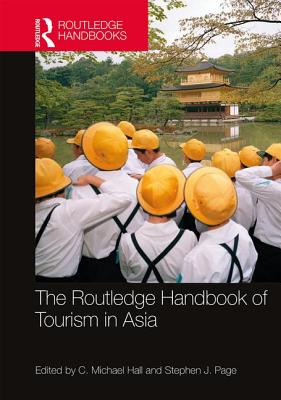Asia is regarded as the fastest growing area for international and domestic tourism in the world today and over the next 20 years.
Asia is regarded as the fastest growing area for international and domestic tourism in the world today and over the next 20 years. Given the economic, social and environmental importance of tourism in the region, there is a need for a comprehensive and readable overview of the critical debates and controversies in tourism in the region and the major factors that are affecting tourism development both now and in the foreseeable future.
This Handbook provides a contemporary survey of the region and its continued growth and development as a key destination and generator of tourism, which is marked by a high proportion of intra-regional travel. The book is divided into five sections. This first section provides an introduction to the region and context to the nationally focused chapters. The next three sections are then broadly based on the three UNWTO Asian regions: South-East Asia, South and Central Asia, and East and North-East Asia, providing readers with a valuable snapshot of tourism at various scales, and from various approaches and positions. The concluding section considers future prospects for tourism in Asia. The handbook is interdisciplinary in coverage and is also international in scope through its authorship and content. It presents a range of perspectives and understanding of the processes and forces that are shaping tourism in this fascinating and dynamic region that is one of the focal points of global tourism.
This is essential reading for students, researchers and academics interested in tourism in the growth region of Asia now and in the future.
Get The Routledge Handbook of Tourism in Asia by at the best price and quality guranteed only at Werezi Africa largest book ecommerce store. The book was published by Taylor & Francis Ltd and it has pages. Enjoy Shopping Best Offers & Deals on books Online from Werezi - Receive at your doorstep - Fast Delivery - Secure mode of Payment
 Jacket, Women
Jacket, Women
 Woolend Jacket
Woolend Jacket
 Western denim
Western denim
 Mini Dresss
Mini Dresss
 Jacket, Women
Jacket, Women
 Woolend Jacket
Woolend Jacket
 Western denim
Western denim
 Mini Dresss
Mini Dresss
 Jacket, Women
Jacket, Women
 Woolend Jacket
Woolend Jacket
 Western denim
Western denim
 Mini Dresss
Mini Dresss
 Jacket, Women
Jacket, Women
 Woolend Jacket
Woolend Jacket
 Western denim
Western denim
 Mini Dresss
Mini Dresss
 Jacket, Women
Jacket, Women
 Woolend Jacket
Woolend Jacket
 Western denim
Western denim
 Mini Dresss
Mini Dresss






























































